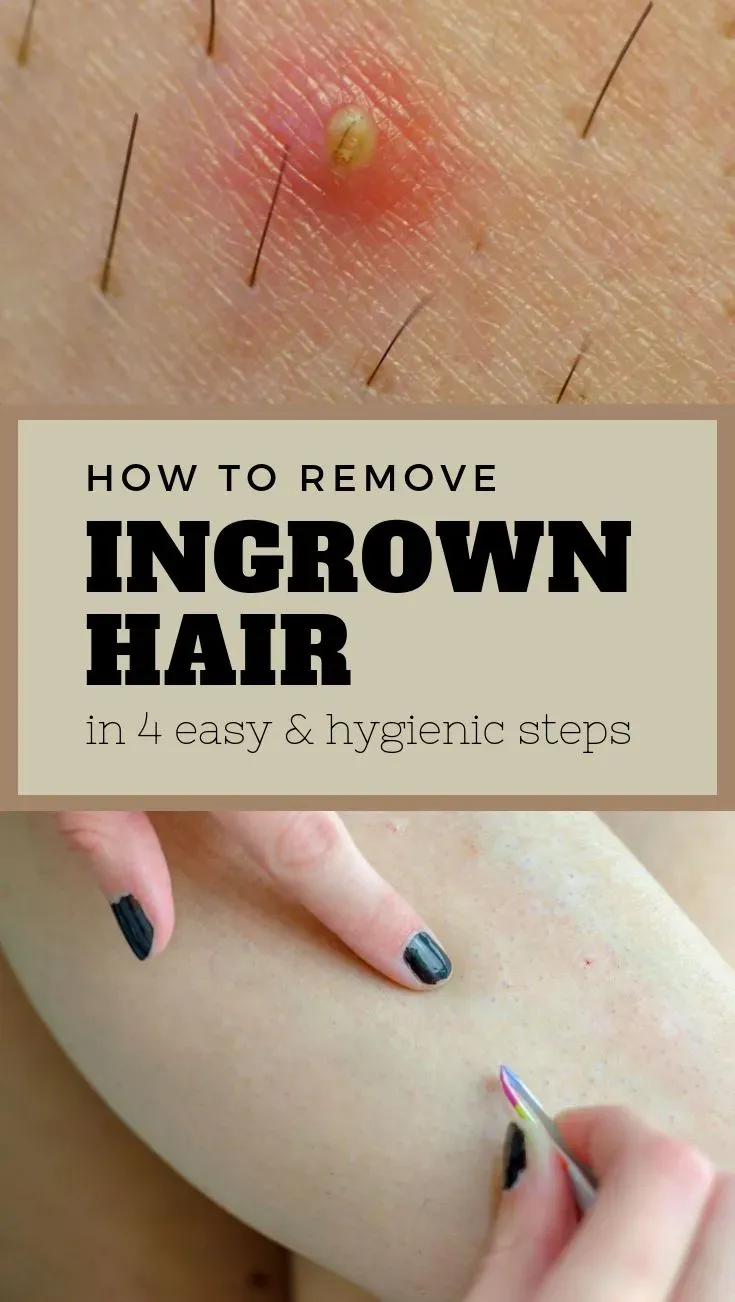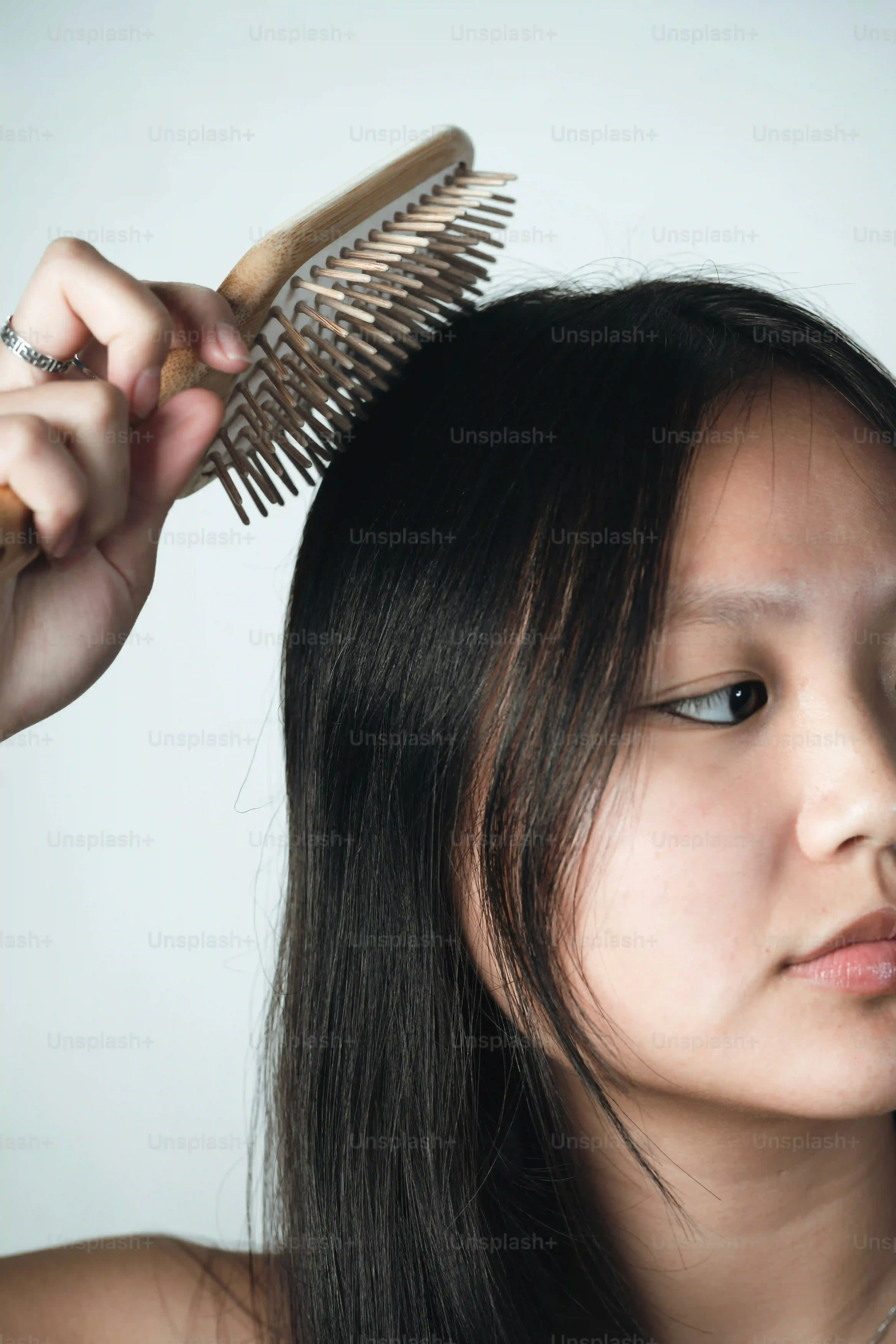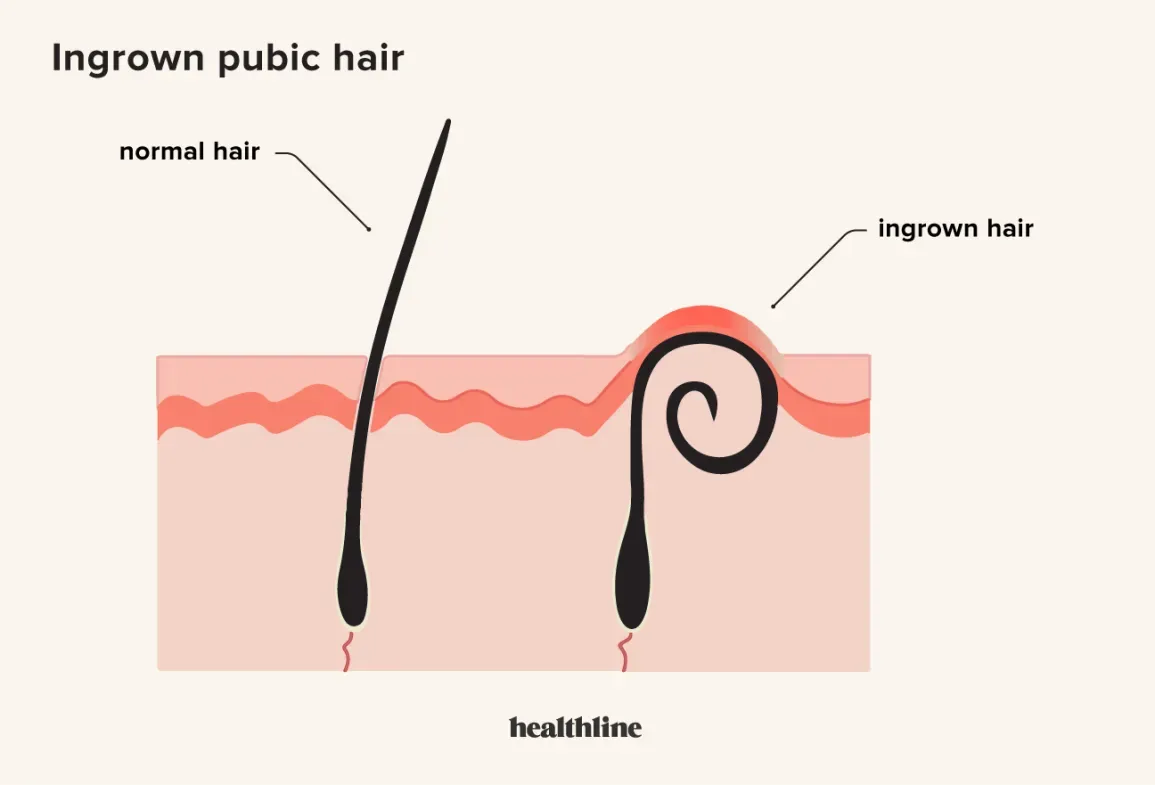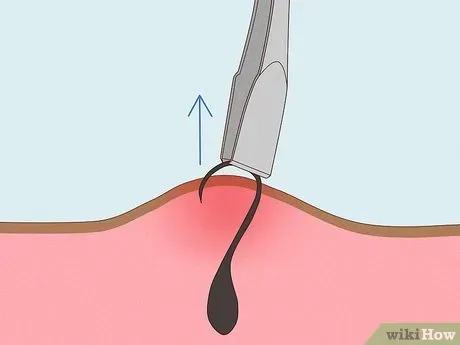Table of Contents
Let's be honest, nobody likes those annoying red bumps that pop up after you've just tried to get smooth skin. They're painful, unsightly, and can feel like a tiny, angry protest happening right on your body. You thought you were done with the hair, but nope, it decided to stage a rebellion and grow back into your skin instead of out. It's frustrating, and the first thought is usually, "How do I get rid of this *now*?" Trying to figure out the best and safest way to tackle these little skin invaders is a common problem. You've probably seen all sorts of questionable advice online, maybe even been tempted to go at it with tweezers like you're performing delicate surgery in your bathroom mirror. Before you grab the sharp objects and potentially make things worse, take a breath. Understanding *why* ingrown hairs happen is the first step, and knowing the right techniques on how to remove ingrown hair safely is the critical next one. This article isn't about magic cures or risky DIY hacks. We're going to walk through the practical, no-nonsense methods to deal with existing ingrown hairs and, more importantly, how to stop them from showing up in the first place. Get ready to learn how to handle these bumps without turning a minor irritation into a major issue.
What's Up With Ingrown Hairs Anyway?

What's Up With Ingrown Hairs Anyway?
So, What Exactly Is an Ingrown Hair?
Imagine a tiny rebel without a cause, specifically a hair strand that gets confused and decides to grow back into your skin instead of straight out. That's pretty much the deal with an ingrown hair. It happens after shaving, waxing, or plucking – basically, any hair removal method where the hair is cut or pulled below the skin's surface. Sometimes, the new hair shaft is weak or the pore opening is blocked, and the hair just can't find its way out. It curls back and starts growing sideways under the skin, or sometimes even re-enters the skin.
Your body sees this as a foreign invader. It doesn't like things poking around where they shouldn't be. So, it mounts a defense, which usually looks like a red, sometimes painful, bump. It can look a lot like a pimple, and sometimes it even has pus because the area gets inflamed or infected.
Why Do These Little Pests Happen?
Several things make you more likely to get an ingrown hair. People with curly or coarse hair often struggle more because the hair is naturally more prone to bending back into the skin. Shaving too closely or using dull blades can create sharp-edged hairs that easily pierce the skin on their regrowth journey. Dry skin or dead skin cells can also block the pore opening, trapping the hair underneath.
Tight clothing rubbing against the skin after hair removal is another common culprit. That constant friction can push growing hairs back down or irritate the skin, making it harder for the hair to emerge properly. Think about tight jeans after shaving your legs, or snug underwear after dealing with bikini line hair. It's a recipe for irritation and potential ingrown hairs.
- Shaving too close
- Using dull razors
- Curly or coarse hair type
- Dead skin cell buildup
- Tight clothing rubbing skin
- Incorrect waxing/plucking technique
Are They Just Annoying, or Can They Be a Bigger Problem?
Most of the time, an ingrown hair is just a nuisance – uncomfortable and unsightly. But they can definitely escalate. The inflamed bump can become quite painful, especially if it's in a sensitive area or gets rubbed constantly. Since the skin is broken or irritated, there's a risk of bacterial infection. This can lead to more swelling, redness, pus, and general misery.
In some cases, especially if you pick at them (which, let's be real, is tempting but a bad idea), they can leave behind dark spots (hyperpigmentation) or even small scars, particularly on darker skin tones. So, while a single ingrown hair might seem minor, neglecting them or trying to force them out incorrectly can lead to longer-lasting skin issues.
Safe and Simple Ways How to Remove Ingrown Hair at Home

Safe and Simple Ways How to Remove Ingrown Hair at Home
Giving That Trapped Hair a Helping Hand (Gently!)
Alright, you've spotted the enemy – a little red bump with a hair trapped inside. Your mission, should you choose to accept it, is to free that hair *without* turning the situation into a full-blown skin disaster. The absolute golden rule here is: do NOT pick, squeeze, or dig aggressively. Seriously, resist the urge. That's how you introduce bacteria, cause infections, and end up with scars that hang around way longer than the ingrown hair ever would.
The goal isn't to force the hair out, but to encourage it to grow in the right direction. Think of yourself as a helpful guide, not a demolition crew. Patience is key. Sometimes, the best way how to remove ingrown hair is by simply waiting and helping the skin soften up so the hair can emerge on its own.
One of the simplest and most effective first steps is applying a warm compress. Grab a clean washcloth, soak it in warm (not hot!) water, wring it out, and hold it against the ingrown hair for 5-10 minutes. Do this several times a day. The warmth helps to open up the pore and soften the skin, making it easier for the hair to poke through. It also feels pretty soothing on an irritated bump.
Combine the warm compress with gentle exfoliation. Using a soft brush or a gentle scrub in the shower can help remove dead skin cells that might be blocking the hair's exit. Don't scrub too hard – you're not trying to sandpaper your skin off. Just a light, circular motion over the affected area. This can sometimes be enough to free the tip of the hair.
Simple Ingrown Hair Home Remedies
- Apply warm compresses frequently
- Gently exfoliate the area
- Keep the skin clean and moisturized
- Avoid tight clothing over the area
When You Can See the Hair: The Sterile Approach
so you've used warm compresses and exfoliated, and now you can actually see the loop or tip of the hair right under the surface. This is the point where you *might* consider intervention, but proceed with extreme caution. You need sterile tools for this. We're talking about a sterilized needle or a pair of sterilized fine-tipped tweezers. Sterilize them by wiping them with rubbing alcohol.
With clean hands and sterile tools, gently nudge the loop of hair. The aim is just to lift the tip of the hair out from under the skin. Do NOT try to pull the hair out at this stage unless it comes out with absolutely no resistance. Just free the end so it can grow outwards. If the hair is still buried or requires digging, stop. You're doing more harm than good.
After you've successfully freed the hair (or if you decided not to intervene), clean the area with mild soap and water. You can also apply an antiseptic solution like rubbing alcohol or a dab of antibiotic ointment to keep it clean and prevent infection. Keep the area clean and dry, and continue with warm compresses if there's still any swelling or irritation. Sometimes, just freeing the tip is enough, and the hair will grow out normally from there.
Remember that story about my friend who tried to get a deeply buried ingrown hair out with a rusty safety pin? Yeah, ended up with a nasty infection and a trip to the doctor. Not worth it. That's why knowing the safe ways on how to remove ingrown hair is crucial. If it looks infected, is very painful, or you can't see the hair easily, leave it alone and consider professional help.
Over-the-Counter Helpers
There are also products specifically designed to help with ingrown hairs. Look for serums, lotions, or pads containing ingredients like salicylic acid or glycolic acid. These are chemical exfoliants that help to remove dead skin cells and keep the pores clear, making it easier for hairs to grow out properly. They can also help reduce inflammation and redness.
Apply these products regularly as directed, usually after showering and before moisturizing. They work best as a preventative measure but can also help existing ingrown hairs resolve faster. Just be mindful if you have sensitive skin, as some of these ingredients can be drying or irritating. Always patch test first.
Hydrocortisone cream (a mild steroid) can also be used sparingly to reduce redness and inflammation if the ingrown hair is particularly angry and irritated. Don't use this long-term, and check with a pharmacist or doctor if you're unsure. The goal is to calm the skin down so the hair can hopefully work its way out.
These products aren't magic bullets, but they can definitely be part of a strategy on how to remove ingrown hair and manage the issue. Combine them with good skincare habits, and you'll see better results than trying to physically extract every single one.
Common Ingredients in Ingrown Hair Products
Ingredient | How it Helps | Considerations |
|---|---|---|
Salicylic Acid | Exfoliates, unclogs pores | Can be drying; good for oily skin |
Glycolic Acid | Exfoliates, improves texture | Can increase sun sensitivity; good for dry/normal skin |
Benzoyl Peroxide | Kills bacteria, reduces inflammation | Can bleach fabric; drying |
Hydrocortisone | Reduces redness and swelling | Short-term use only; steroid |
When You Really Shouldn't Try to Remove Ingrown Hair Yourself

When You Really Shouldn't Try to Remove Ingrown Hair Yourself
When It Looks Like More Than Just a Bump
so you've got an ingrown hair. Annoying, yes. But sometimes, that little bump turns into something a bit more serious, and that's your cue to back away from the tweezers and step away from the mirror. If the area around the ingrown hair is significantly red, hot to the touch, swollen, and particularly painful, you might be dealing with an infection. We're not talking about a little bit of irritation; we mean throbbing pain and spreading redness.
Another red flag is if you see a lot of pus, especially if it's thick or discolored. A tiny bit of white stuff might just be inflammation, but a significant amount of yellow or green discharge is a sign that bacteria have moved in and set up shop. Trying to dig out the hair at this point is like inviting more trouble to the party. You risk pushing the infection deeper or spreading it.
When the Hair is Deep or the Pain is Intense
Sometimes, that ingrown hair isn't just sitting pretty near the surface. It's buried deep under several layers of skin, maybe feeling like a hard, painful lump. If you can't easily see the hair loop or tip right there, waiting to be gently coaxed out, do not start excavating. Attempting to dig out a deeply embedded hair with household tools is a recipe for scarring, pain, and potential infection.
Similarly, if the ingrown hair is causing significant, constant pain that's more than just a mild ache, it's a sign that something isn't right. This could indicate a deeper infection, significant inflammation, or even a cyst forming around the trapped hair. Your best bet here is to leave it alone and seek professional advice. Trust me, a healthcare professional has much better tools and knowledge for dealing with this than your bathroom kit does.
Signs You Should NOT Remove an Ingrown Hair Yourself
- Significant redness, warmth, or swelling
- Intense or throbbing pain
- Thick or discolored pus (yellow or green)
- The hair is deeply embedded and not visible
- The bump feels hard or cyst-like
- Red streaks spreading from the bump
When It Keeps Coming Back or Spreading
Got one stubborn ingrown hair that just won't quit, or worse, are you getting them constantly in the same area? If you've tried the gentle home methods and the problem persists, or if you're developing multiple ingrown hairs that look infected or inflamed, it's time to call in a professional. Recurring ingrown hairs can be a sign of a chronic condition or an underlying issue that needs proper diagnosis and treatment. A dermatologist can offer solutions like prescription creams, antibiotics if there's an infection, or even minor in-office procedures to extract the hair safely.
They can also discuss longer-term solutions if ingrown hairs are a persistent problem for you. Sometimes, methods like laser hair removal can significantly reduce the occurrence of ingrown hairs by reducing hair growth altogether. If you're constantly battling these bumps, exploring options like those offered at hairawaybylaser.com might be a worthwhile consideration for a more permanent solution to break the cycle.
Prevention is Key: Stop Ingrown Hairs Before They Start

Prevention is Key: Stop Ingrown Hairs Before They Start
Get Your Skin Ready Before You Remove Hair
so dealing with existing ingrowns is one thing, but wouldn't it be great if they just didn't show up in the first place? The good news is, you can do a lot to prevent them. It starts *before* you even think about shaving, waxing, or epilating. Prepping your skin is like setting the stage for success. First off, make sure your skin is clean. Removing dirt and oil helps prevent clogged pores, which are basically roadblocks for growing hairs.
Exfoliation is your best friend here. Gently removing dead skin cells from the surface helps keep the path clear for the hair to grow outwards. You can use a physical exfoliant like a scrub or a brush, or a chemical exfoliant with ingredients like salicylic or glycolic acid a day or two before hair removal. Just don't overdo it – aggressive scrubbing can irritate the skin and actually make things worse. Think gentle polishing, not stripping paint.
Master Your Hair Removal Technique
How you actually remove the hair makes a huge difference in preventing ingrowns. If you're shaving, always use a sharp, clean razor. Dull blades drag and pull, leading to uneven cuts that are more likely to curl back. Shave in the direction the hair grows, not against it, especially in areas prone to ingrowns. Shaving against the grain gives a closer shave but increases the risk of the hair tunneling back into the skin. Use a good quality shave gel or cream to provide lubrication.
For waxing or epilating, make sure the hair is long enough for the method to work effectively. Pulling hair that's too short can cause it to break off unevenly below the skin surface. After any hair removal, rinse with cool water to close the pores and apply a soothing, alcohol-free moisturizer. Keeping the skin hydrated and calm is crucial. Avoid applying harsh products or wearing super tight clothes immediately after, as this can trap heat and friction, irritating the follicles.
Your Ingrown Hair Prevention Checklist
- Cleanse skin before hair removal
- Exfoliate gently a day or two prior
- Use a sharp, clean razor (if shaving)
- Shave in the direction of hair growth
- Use lubrication (shave gel/cream)
- Rinse with cool water after hair removal
- Apply a soothing moisturizer
- Avoid tight clothing immediately after
- Consider chemical exfoliants (like salicylic acid) regularly
Beyond the Bandaid: LongTerm Strategies for Preventing Ingrown Hairs

Beyond the Bandaid: LongTerm Strategies for Preventing Ingrown Hairs
Making Prevention a Habit, Not a One-Off
Alright, so you've navigated the tricky world of dealing with existing ingrown hairs. Maybe you successfully freed the little rebel, or maybe you wisely decided to leave it to the pros. But the real victory isn't just fixing the current problem; it's stopping the next one from even starting. This requires a shift from reactive damage control to proactive prevention. It's less about emergency surgery and more about consistent, boringly effective skincare.
This means making things like regular, gentle exfoliation a non-negotiable part of your routine, not just before you shave or wax. Using products with chemical exfoliants like salicylic or glycolic acid a few times a week helps keep those pores clear and the surface skin smooth. Think of it as clearing the runway so the new hairs have a clear path for takeoff. Hydration matters too; well-moisturized skin is more supple and less likely to trap hairs.
Considering Different Approaches to Hair Removal
If ingrown hairs are a constant battle, despite your best prevention efforts with shaving or waxing, it might be time to consider if the hair removal method itself is the problem. Some people's skin just reacts poorly to certain techniques. Electric shavers or trimmers that don't cut hair as close to the skin can sometimes reduce ingrowns compared to razor shaving. Chemical depilatory creams are another option, as they dissolve hair rather than cutting or pulling it, though they can cause irritation for some.
For a more significant change, methods that target the hair follicle itself can dramatically reduce or eliminate hair growth, and consequently, ingrown hairs. Electrolysis permanently destroys individual follicles. Laser hair removal uses light energy to damage the follicles, reducing hair growth over time. While these require a bigger upfront investment and multiple sessions, they can be game-changers for people plagued by chronic ingrowns. Sites like hairawaybylaser.com offer information on how these longer-term solutions work and whether they might be right for you.
Long-Term Ingrown Hair Prevention Tactics
- Establish a consistent exfoliation routine
- Keep skin well-hydrated
- Evaluate your current hair removal method
- Consider switching to electric trimmers
- Explore chemical depilatory creams
- Look into professional treatments like laser hair removal or electrolysis
Putting the Ingrown Hair Problem Behind You
Dealing with ingrown hairs can feel like a never-ending battle, but it doesn't have to be. We've covered the basics of what causes these pesky bumps and, more importantly, the smart ways how to remove ingrown hair when they do appear – gently, safely, and without turning your skin into a battlefield. Remember, tugging and digging usually just make things worse, leading to more irritation or even infection. The real win here is prevention. By adjusting your hair removal routine, keeping your skin happy with exfoliation and moisture, and giving it a break when needed, you significantly cut down the chances of these little rebels forming. It takes consistency, sure, and you might still get one now and then, because skin isn't always predictable. But armed with the right knowledge and habits, you're in a much better position to keep your skin smooth and free from unnecessary bumps and irritation. Focus on the long game: healthy skin leads to fewer problems down the line.
